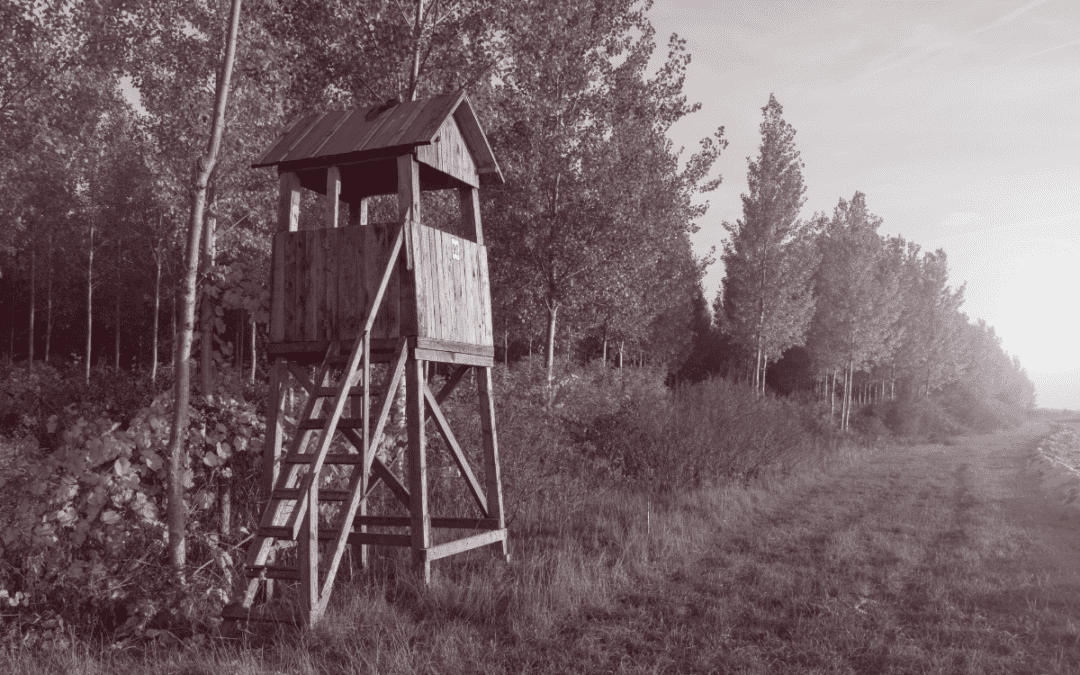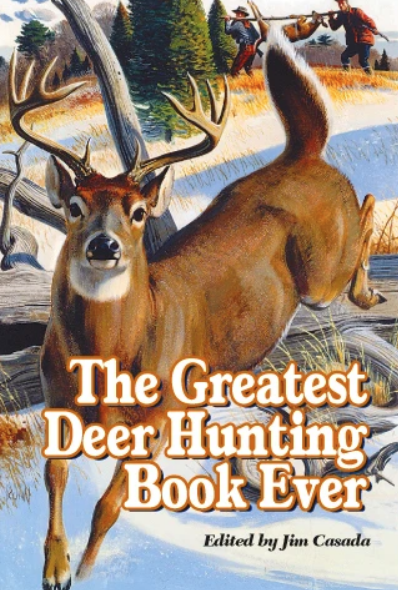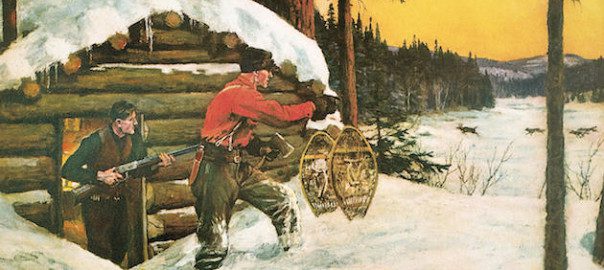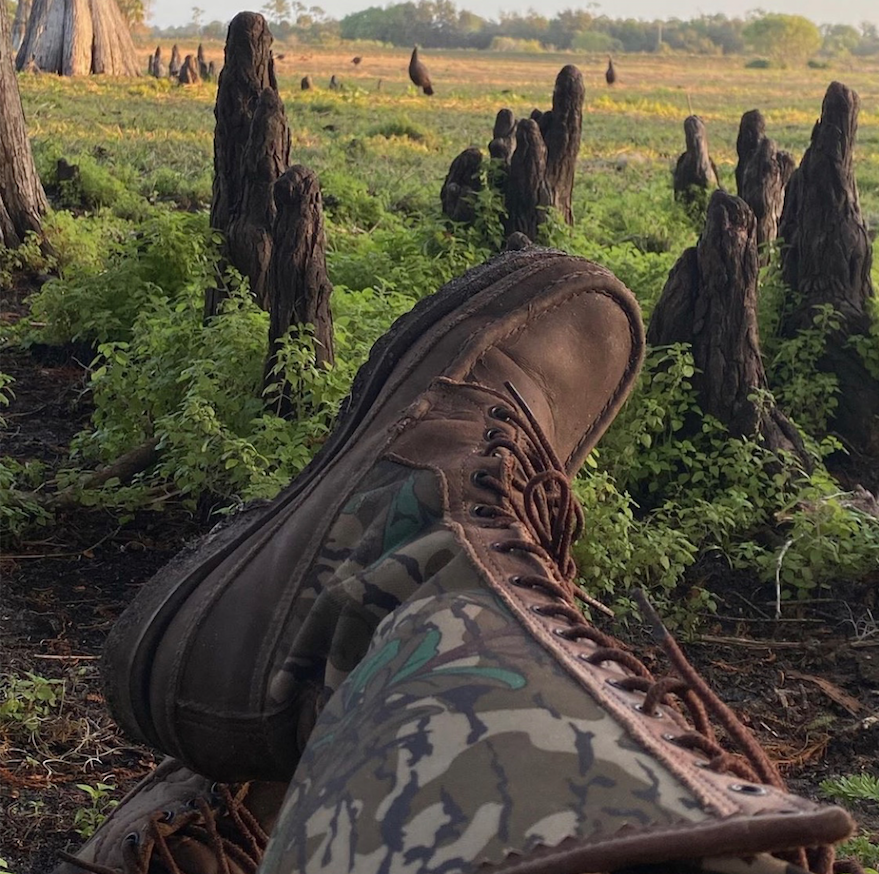Luke Clayton and Larry Weishuhn reflect upon just how much deer stands have changed since the sixties when they both began hunting deer.
I was recently recording “Campfire Talk,” the weekly radio segment that Larry Weishuhn (aka “Mr. Whitetail”) and I have produced for the past 11 years. The topic of hunting blinds/deer stands came up and we reflected upon just how much deer stands have changed since the sixties when we both began hunting deer.
Looking back almost sixty years to the first stand I hunted from––that was actually not a stand at all, but rather the limb of a pine tree that overlooked a small glade in the east Texas woods. My brother-in-law dropped me off at this location with the instructions of “stay put until dark, I’ll come get you then!” Setting atop an 8-inch diameter limb gets mighty uncomfortable after a couple hours, even to an eleven-year-old. I remember just before dark, about the time the deer usually began moving, I crawled down and set at the base of the tree. I had endured all the punishment I could stand!
When I was a year or so older, I began hunting deer with my Uncle and Aunt on some family land west of Houston. I thought I was in hog heaven when I climbed some two by four steps up into an oak with a couple of boards nailed atop a couple a forked limb. This was the most comfortable treestand I had hunted from! I remember well a good size buck that chased a doe by that stand. He stopped directly behind a 30-inch oak. I could see his tail on one side and the tip of his antlers on the other. I was using 00 buckshot in an old single shot 12 gauge and had the hammer pulled back, waiting for an open shot. The buck eased his head around the tree and being the inexperienced hunter I was I at the time, I pulled the trigger and the buck dropped. But he was up running about the time I had climbed halfway down the tree. One of the buckshot had obviously hit an antler and temporarily stunned the buck.
Makeshift Stands
Makeshift stands were the name of the game during the years when deer numbers were on the increase in Texas and looking back, it’s a wonder more accidents didn’t occur. Manufactured stands became popular in the seventies. I still remember the old Baker climber treestands. These worked great on pine trees without limbs, but as I remember, one had to possess the climbing ability of a power company lineman to climb with one of the earliest climbing stands. The trick was to first attach your bow or rifle to a sturdy pull cord and then climb the tree and use the cord to hoist your weapon up once you were in a stable position.
Lock-on Stands
Lock-on tree stands were the next craze and many hunters use them today. With a ratchet and sturdy straps, these stands provide a safe platform to hunt from, but it’s important to check the straps regularly; I’ve found squirrels love to chew on the straps. It’s a good idea to change the straps that secure the stand to the tree on an annual basis––better to be safe than sorry. Most hunters pull their lock-on stands after the close of deer season and when hunting national forests or public lands, these stands go up and tear down fairly quickly, making them a good choice for quick hunts.
Ladder Stands
I’ve used ladder stands for the past several years and love the stability they provide. The stands, as the name implies, are basically ladders with seats that buckle to the tree with ratchets. Once secured to the tree, they provide a very stable platform from which to hunt. I can’t remember the last time I’ve hunted from a lock-on stand. Hunting from a ladder stand is safe and simple; it’s easy to climb the ladder, get seated and buckle your safety harness.
Snap Lock Hunting Blinds

Clayton’s friend, Jeff Rice, recently set up this lightweight but strong Snap Lock Hunting Blind on his property. This blind is a far cry from some of the earlier stands Clayton hunted from in his younger days. Photo courtesy Jeff Rice
There is something very comforting about hunting from a stand with four walls to shelter one from a cold north wind and a roof to keep you dry during a downpour. In past years, I have made many plywood blinds with sheet metal roofs, but these stands require a good bit of work to construct, they are heavy and require regular maintenance. About a decade ago, I discovered Snap Lock Hunting Blinds. These blinds, as the name implies, snap together in the field and set up is a breeze. The four walls and roof are light and easy to transport. I have actually packed the blinds back into some remote hunting hotspots and set them up in areas that would be next to impossible to access with conventional blinds.
My friend, Jeff Rice, and I recently disassembled a couple of my blinds that had been in the woods for years and set them up on his land. The process was quick and easy. Once reassembled on Jeff’s place, the blinds were as sturdy as the day I first set them up years ago. The locking lugs provide the lion’s share of stability, but snap ties placed through predrilled holes give added strength. The panels and door with Plexiglas windows are well designated and insulated. I usually position a ladder stand nearby these enclosed ground blinds and am set for everything from a bow hunt on a crisp October morning to a mid-winter set for deer or hogs in my ground blind.
Deer seasons are fast approaching, but there’s still plenty of time to ensure your blinds are safe and ready for another hunting season. You might just want to take a tip from this old hunter and give some thought to four walls and a roof. Those chill north winds will come howling down from the Arctic before long and it’s mighty nice to be in a comfortable stand with a propane heater.
There’s something about the deer-hunting experience, indefinable yet undeniable, which lends itself to the telling of exciting tales. This book offers abundant examples of the manner in which the quest for whitetails extends beyond the field to the comfort of the fireside. It includes more than 40 sagas which stir the soul, tickle the funny bone, or transport the reader to scenes of grandeur and moments of glory.
On these pages is a stellar lineup featuring some of the greatest names in American sporting letters. There’s Nobel and Pulitzer prize-winning William Faulkner, the incomparable Robert Ruark in company with his “Old Man,” Archibald Rutledge, perhaps our most prolific teller of whitetail tales, genial Gene Hill, legendary Jack O’Connor,Gordon MacQuarrie and many others. Buy Now





